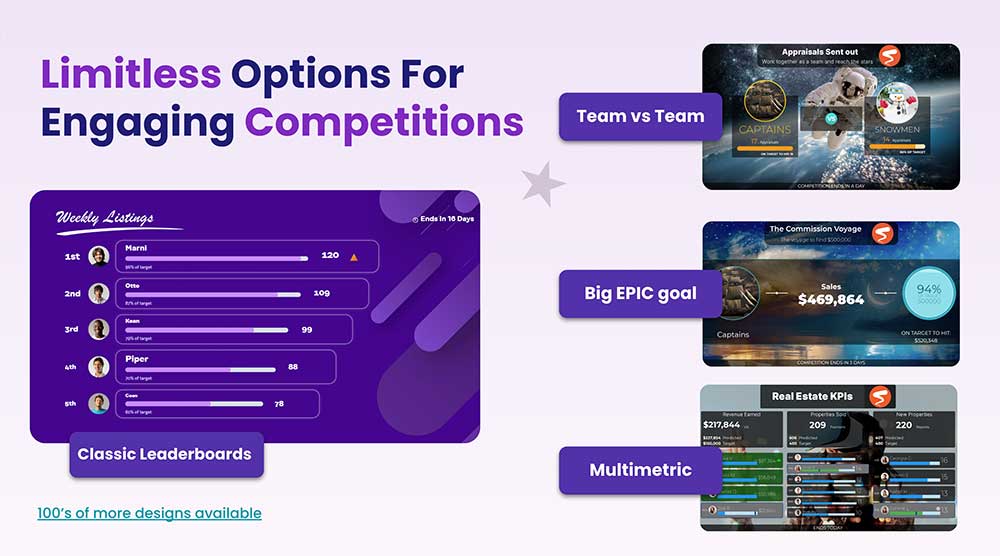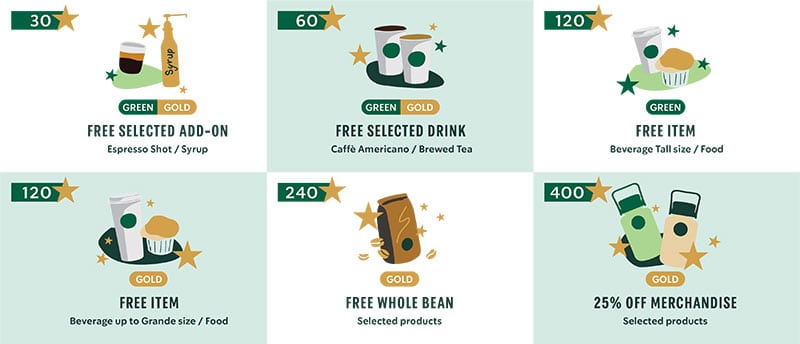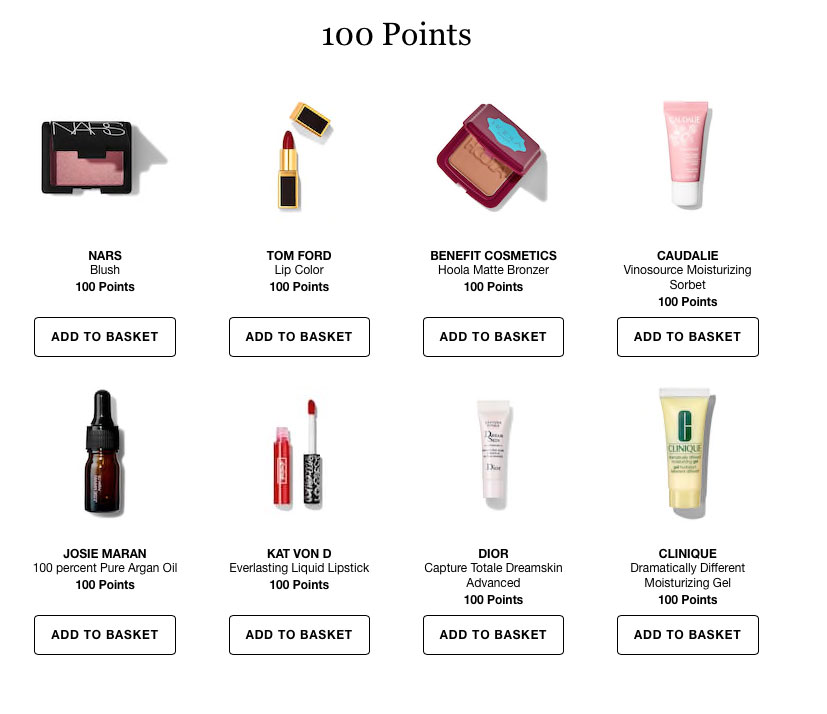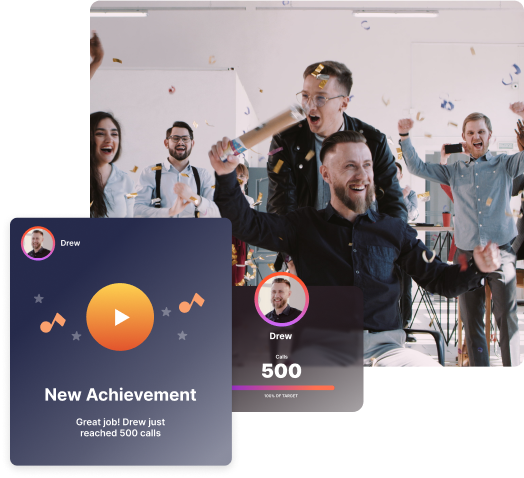Exploring the Widespread Use of Gamification Across Various Industries
Wondering who uses gamification? Gamification is applied in a range of sectors. Some of these industries include hospitality, retail, finance, healthcare, and education. Companies like Google, Domino’s Pizza, Samsung, and Starbucks, implement gamification as an excellent marketing tactic, corporate training, and a tool to increase engagement.
Successful gamification can increase customer satisfaction, make hiring more efficient, and improve productivity. Gamified elements like a reward system, point systems, leaderboards, and achievement use human psychology to inspire employees.
Gamification can be used in non-game contexts to revamp mundane tasks and make them more exciting. Here we’ll take a closer look at which companies use gamification software. We’ll also include gamification statistics that you may find helpful.
What is the size of the gamification industry?
Gamification has skyrocketed in popularity. Based on recent statistics, the gamification market size is estimated to increase from $9.1 billion in 2020 to $30.7 billion by 2025. That’s a CAGR of 27.4%.
The main factor driving growth in gamification is boosting employee engagement and performance. A gamification system can be lucrative for employers, consumers, and employees. Gamification vendors can provide revenue feedback and details, utilizing it for getting improved client-oriented strategies. This drives the adoption of game mechanics in non-game settings.
As of 2021, gamification data shows that the global gamification industry was at $11.04 billion. For comparison, in 2016, the market value was $4.90; in 2018 was $6.80; and in 2020, it was $9.10. These gamification statistics indicate a steady growth rate. But adding game elements to non-game settings isn’t just good for improving business results. Game elements can also be added to learning systems. Many institutions are estimated to implement gamification in the foreseeable future.
Those who introduce gamified elements tend to see better motivation, engagement, and interest from students. As a result, regions worldwide are estimated to use a gamification strategy to revamp their learning systems. But adding game elements to non-game settings isn’t just good for improving business results. Game elements can also be added to learning systems. Many institutions are estimated to implement gamification in the foreseeable future.
Gamification: Transforming Industries and Workplaces
Gamification is a versatile concept that can be used across industries. It can be added to a project management app, leadership training curriculum, or even a customer loyalty program. By incorporating game elements, companies can create engaging experiences that motivate users and enhance productivity.
Many gamification use cases have gained a lot of attention. Especially those used by renowned companies such as Dominos, KFC, Siemens, and Google. These organizations have successfully implemented gamification strategies to address various business goals, from improving employee training to increasing customer engagement.
Many businesses and senior execs are looking to use gamification in the workplace. It can promote customer and employee engagement, productivity, and motivation. By leveraging gamification tactics such as point systems, leaderboards, and rewards, companies can boost employee engagement and encourage healthy habits among their workforce.
How Spinify Can Help Companies Integrate Gamification to Boost Team Performance
In today’s competitive business world, integrating gamification into your company’s strategy can be a game-changer. Spinify offers a powerful tool for businesses looking to enhance team performance through gamification. By incorporating game-based elements into the workplace, Spinify helps companies motivate employees, increase engagement, and drive business results.

Personalized Gamification Strategies
Spinify understands that every company has unique goals and challenges. That’s why we provide personalized gamification strategies tailored to your specific business context. Our platform allows you to implement gamification tactics that align with your company’s objectives, whether it’s to improve employee engagement, boost productivity, or increase customer satisfaction.
AI-Powered Personalization
Spinify’s AI-driven platform tailors gamification experiences to individual user preferences and behaviors. This personalization ensures that employees receive challenges and rewards that resonate with their unique motivations, leading to increased engagement and productivity. By understanding user behavior through AI, Spinify can suggest the most effective gamification elements to implement, such as point systems, leaderboards, or badges.
Dynamic Leaderboards and Point Systems
One of the key features of Spinify is its dynamic leaderboards and point systems. These gamified elements encourage healthy competition among team members, motivating them to achieve their targets and excel in their roles. By earning points and climbing the leaderboard, employees are driven to improve their performance, leading to increased engagement and productivity.
Reward Systems and Recognition
Spinify’s gamification platform includes a robust reward system that recognizes and celebrates employee achievements. By offering tangible rewards such as badges, certificates, or prizes, companies can reinforce positive behaviors and encourage employees to strive for excellence. This not only boosts morale but also fosters a culture of continuous improvement and success.
Real-Time Feedback and Analytics
With Spinify, companies can access real-time feedback and analytics to monitor the effectiveness of their gamification strategies. This data-driven approach allows businesses to make informed decisions, optimize their gamification tactics, and achieve their desired business goals.

Seamless Integration with Existing Systems
Spinify’s AI-driven solutions are designed for seamless integration with existing business systems. This compatibility ensures that companies can easily incorporate AI-enhanced gamification into their workflows without disrupting current processes. The user-friendly interface allows managers and employees to navigate the platform effortlessly, maximizing the benefits of AI-powered gamification.
By leveraging Spinify’s expertise in gamification, companies can transform routine tasks into exciting challenges, boost employee motivation, and enhance overall business performance. Discover how Spinify can revolutionize your workplace and drive meaningful results by visiting spinify.com.
Book a demo today and ensure to check our LinkedIn page for more.
How many companies use gamification?
Roughly 70% of the 2,000 biggest companies on the globe are using gamification. Retail, health and wellness, food and beverage, and technology industries are at the forefront of using gamification in the workplace.
Businesses’ most used gamification techniques are points, levels, progress bars, goals, employee competition, onboarding, and instant feedback.
More companies are starting to use gamification in training programs for new employees and optimizing the business process. With new technology, business gamification can motivate users, stimulate a competitive spirit, and create engagement through a rewards program.
Gamification in technology
Many companies are using video game features in non-game contexts. They are gamifying their workspace and websites to boost compliance training, external communications, employee motivation, engagement, and more.
They know when to implement gamification to make the most of its features. Senior executives notice increased customer loyalty and interest and a better working experience. Here are some of the top technology sector companies that use gamification.
Google has been adding game concepts to most of its public elements for years. For example, frequent Google news readers can earn more than 500 badges. Gamification can be used to gain rapid feedback, add achievable tasks, and create clear objectives and compelling narratives.
Google gamified its logos. The company changes its logo to celebrate different events and occasions. But it can also be turned into a playable interactive logo. One of its most popular gamified logos was the Pac-Man for the 30th anniversary. The logo was turned into a playable video game to honor Les Paul. Transforming the Google logo with gamified concepts generates a ton of traffic to its search page.
Microsoft
Microsoft is an excellent example of using gamification elements in different training and courses. Gamification involves the use of various game mechanics to boost employee performance. Microsoft Teams is one of the most popular software across different organizations, along with gamification.
Earning Dynamics, Azure, and Office 365 Certificates becomes more entertaining through improved training solutions. These solutions combine practical labs, video, and Microsoft Certification preparation. Microsoft staffers around the globe weigh in on language localization. Since Microsoft has countless language localization needs, Microsoft opted for a gamified solution called the “Language quality” game. Microsoft intentionally added poor translations to check if its employees were paying attention. Microsoft Japan actually took a company-wide day off to play the game and win the leaderboard.
Gamification in food & beverage
Gamification in the food industry is here to stay. Companies can use gaming concepts to attract new guests and motivate employees. This is done through a reward system, points, tasks, collecting achievements, and integrating them into the business.
KFC
When KFC Japan added shrimp to its menu, it launched a gamified campaign to create excitement. This strategy boosted brand awareness and incentivized users to try the product. In return, they would be rewarded with discount vouchers.
The gamified solution was “Shrimp Attack,” – a video game users could play to earn points and get discount vouchers. This marketing campaign hit multiple cultural points and created a lot of noise on social media sites.
The game had a staggering 91% completion rate with over 800,000 total plays. It was so effective that the product sold out due to high demand. Ultimately, the campaign was cut short to stabilize the supply and demand. Nevertheless, it offered a significant boost in-store sales compared to the previous year.
Dominos
Dominos uses gamification to decrease delivery time, increase employee engagement, and revamp the training process. Domino created the Pizza Maker course, which included gamification and simulation to reward, engage, and assess employees.
The course helped reduce onboarding time and added competitive elements that inspired other users to beat their old scores. This drove competency, speed, and accuracy, which are critical when keeping up with demand.
Starbucks
The Starbucks app’s “My Rewards program” uses gamification to boost sales and digital traffic. Users collect stars and rewards to exchange them for their favorite foods or drinks. This program not only enhances customer loyalty but also strategically encourages repeat visits and purchases.
By integrating game mechanics such as earning stars for each purchase, Starbucks motivates users to engage more frequently with the brand. The rewards program is designed to offer personalized incentives, which can lead to increased customer satisfaction and brand loyalty. Additionally, the app provides users with exclusive offers, birthday rewards, and the ability to order ahead, further enhancing the customer experience.

The Starbucks gamification strategy is a prime example of how adding game elements to a loyalty program can significantly boost customer engagement and drive business results. With millions of active users, the Starbucks Rewards program has become a model for other companies looking to implement successful gamification strategies in the retail sector.
Gamification in Retail
In the bustling world of retail, companies are constantly seeking innovative ways to captivate customers and enhance the shopping experience. Enter gamification—a strategy that has proven to be a game-changer in the industry. By infusing game elements into the retail environment, businesses can motivate users, increase customer satisfaction, and drive brand loyalty.
Retail giants like Sephora, AliExpress, and IKEA have successfully integrated gamification strategies to engage their audiences and achieve impressive business results. From interactive quizzes and virtual reality experiences to loyalty programs and competitive challenges, these companies are leveraging gamified elements to transform the shopping journey and boost customer engagement. In this section, we explore how gamification is revolutionizing the retail sector and providing exciting challenges that keep customers coming back for more.
Sephora
Sephora is one of the most well-known companies that use gamification. Some of the most successful gamification examples are their “Beauty Uncomplicated.” This is a 3-step questionnaire that helps customers find the right tools and makeup.
It uses a Tinder-like approach, where customers can swipe through their options and select the preferred product. This gamification strategy led to increased engagement for the millennial audience and better ease of use for new customers.

AliExpress
There is an entire section of the AliExpress app dedicated to gamification. Customers can do different tasks and games to win more coins. Coins are the primary currency, which could be exchanged for products and coupons.
Some of the gamification examples that game designers created are daily tasks and healthy competition among users. Although there is no direct competition, people can see how others are doing, which can motivate them to improve their daily progress and earn more coins.
IKEA
IKEA uses VR gamification to transform the online shopping experience and improve its training and onboarding process. The company launched an immersive VR experience for clients, where people can preview different styles, colors, and materials of different pieces of furniture.
The company also uses gamification for employee training. The goal is to show new hires how to start paying attention to the company policies and core values, which are “simplicity” and “togetherness.” Not only do gamification applications help with the training program, but they can also give employees better awareness of the different job functions.
Gamification in Health & Wellness
Companies are using gamification to improve training programs and boost employee engagement. It encourages a sense of accountability and responsibility in employees.
Modern gamification allows employees to track the team’s challenges and manage their progress and goals. Here is a list of some companies in the healthcare industry that successfully use gamification.
Omnicare
Omnicare is the biggest provider of pharmacy services in the United States. In 2013, the company saw substantial abandonment rates and very long waiting queues. As a result, they used gamification to amplify their customer service.
Game-based elements such as rewards and points were added to boost motivation in new employees. Some of the highest performers were listed on leaderboards, and employees received prizes such as movie tickets or Amazon gift cards.
Senior executives saw 100% participation from the employees. The customer wait queues also decreased by 50%.
Ayogo Health, Inc.
Ayogo is a pharmaceutical and healthcare organization that develops client relationships using the science of engagement. The company created the Empowera healthcare gamification platform, which helps people work on their health and take their medicine on time.
This gamification platform is designed to accommodate the needs of diabetic patients. It can help them track their overall health and blood sugar levels.
Mango Health
Mango Health is one of the top companies in the healthcare gamification market. They help patients develop healthy habits and manage their daily health. Their product boosts medication adherence rates and is dedicated to assisting patients in leading healthier lives.
Gamification: Unlocking New Potential Across Industries
Gamification is a powerful tool that transcends industries, offering innovative ways to enhance project management apps, leadership training curricula, and more. Renowned companies like Dominos, KFC, Siemens, and Google have successfully harnessed gamification strategies to achieve remarkable business results.
By incorporating game elements, businesses can significantly improve customer and employee engagement, boost productivity, and foster motivation. As more senior executives recognize its potential, gamification is becoming an integral part of workplace strategies.
For those looking to elevate user experience and digital engagement, Spinify provides a comprehensive gamification solution. Beyond a mere platform, Spinify delivers tailored strategies to grow internal partner teams and drive success. Explore how gamification can transform your business and visit our LinkedIn page for more insights.





